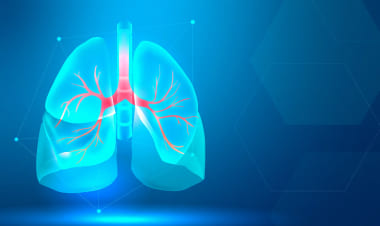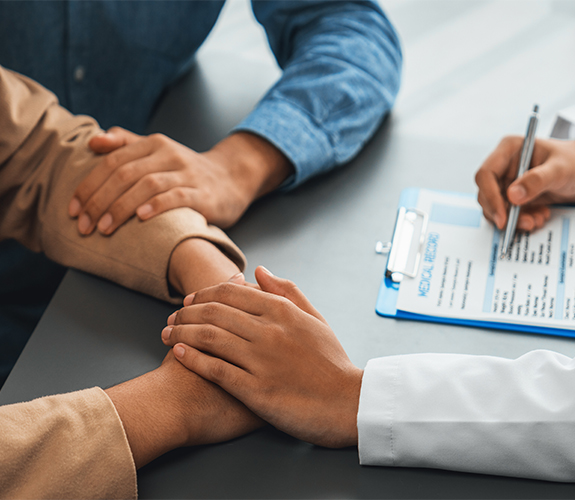COPD is a chronic disease of the lungs that obstructs airflow of the lungs. Breathing problems, choking, sputum production, and wheezing are common symptoms. Prolonged exposure to irritating gases or particulates, most frequently cigarette smoke, is by far the most common cause. Patients with COPD are much more likely to develop heart disease, lung cancer, and a wide range of other situations.
Experts at the Best Respiratory Medicine Hospital in Delhi, state that the 2 most frequent conditions that contribute to COPD are emphysema and chronic bronchitis. These two conditions commonly live side by side and can range in intensity among COPD patients.
Chronic bronchitis is a disease that causes inflammation of the airways in the lungs, which transfer air to and from the lungs' air sacs. It is differentiated by a chronic cough and the secretion of mucus.
Emphysema is an ailment in which the lobules at the finish of the lungs' littlest air passages (bronchioles) are destroyed as a result of tobacco smoking and other aggravating gases and particulates.
COPD is a curable illness, regardless of the fact that it is a chronic condition that gets worse over time. Best Pulmonologist in Delhi advises that patients with COPD can achieve good symptomatic relief and life quality with successful handling, as well as a reduced risk of other associated conditions.
Symptoms:
Symptoms of COPD mostly include:
1.Facing breathlessness, particularly during physical activities
2.Wheezing
3.Chest tightness
4.A chronic cough that also brings up sputum
5.Frequent respiratory infections
6.Lack of energy
7.Unsolicited weight loss
8.Swelling in ankles and also in the feet, at times
Causes:
Cigarette smoking is the leading risk factor for COPD in advanced nations. COPD is common in developing countries world among people exposed to fumes from the combustion of fuel for cooking and heating in unventilated homes.
Only a small percentage of persistent smokers develop medically visible COPD, though many smokers with a long history of smoking might very well develop reduced lung function. Fewer common lung conditions develop in some smokers. They could be mistaken with COPD until a more thorough evaluation is done.
Treatment:
Numerous patients with COPD have gentle illnesses that require little treatment other than quitting smoking. Even with the most advanced stages of the disease, effective therapy is indicated to reduce symptoms, slow advancement, lower your risk of comorbidities and impaired function, and improve your opportunity to live an active life.
Doctors at the Best Pulmonary Medicine Hospital in Delhi mention the following factors to curb the complexities of COPD.
1.Quitting Smoking - The most critical change in any COPD treatment regimen is to give up smoking wholly. Stopping smoking can help avoid COPD from aggravating and lowering your ability to breathe. Even so, quitting smoking is not simple.
2.Bronchodilators - Bronchodilators are inhalable medications that unwind the muscles surrounding your airways. This can help alleviate respiratory infections and breathlessness, as well as make breathing easier. Based on the intensity of your disease, you may necessitate a short-acting bronchodilator before actions, and an everyday long-acting bronchodilator, or both.
3.Inhaled steroids - Corticosteroid medications when breathed can reduce airway stress and swelling prevent chronic conditions. Bruising, oral infections, as well as difficulty breathing, are potential side effects. These medications help people who have frequent COPD flare-ups.
4.Oral Steroids - Short courses of steroidal anti-inflammatory drugs may inhibit much farther progressive deterioration of COPD in people who have experienced periods when their COPD is becoming more severe, recognized as a moderate and severe acute exacerbation.
5.Lung Therapies – For individuals with mild to severe COPD, doctors usually use the following important therapies:
Therapy with oxygen:
Supplemental oxygen may be necessary if there is low pressure in your blood.There are many devices that deliver oxygen to your lungs, including ultra-light, portable units which you can take with you when you run an errand or take trips.
Program for pulmonary rehabilitation:
Overall, these programs incorporate education, exercise training, nutrition advice, and counselling services. You'll work with a bunch of specialists who might customize your rehabilitation program to the specific requirements.
Make sure to be vocal about your needs and what is causing discomfort. If you don’t adjust these medications and therapies according to your need, then no effect will be happening even after the medications are administered. The Best Pulmonologist in Delhi advises you to visit your doctor on a regular basis and keep a track of your COPD accordingly.



